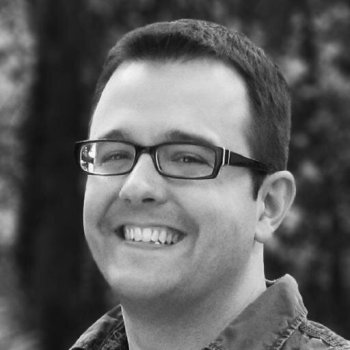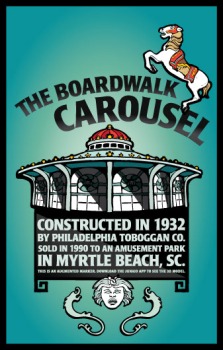By: Carmen Pineiro
Asbury Park is renowned for its classic attractions like its carousel and historic boardwalk that once drew tourists to visit.
The carousel, one of the most popular and fondest attractions, is no longer in the boardwalk after it was sold to Family Kingdom Amusement Park in Myrtle Beach, South Carolina in 1990.
Using photographs from post cards of the carousel, Kean Design professor, Edward Johnston, and professors from Monmouth University, brought the carousel back to life through image editing software to reconstruct the image into a 3D model.
“We worked very closely to the Asbury Park library,” Johnston said. “They had a great collection of old post cards.”
The project currently exists as a 3D reality channel in the Junaio augmented reality browser. Once the app is downloaded, the 3D model can be experienced at the carousel house at the boardwalk in which the carousel appears right in front of you through the app which is referred to as the on-site experience.
It can also be experienced off-site which is when the 3D model appears through the app without having to be at the carousel house. The off-site experience works specifically with designed posters. Those posters exist as marker images, which is essentially image tracking through the same technology as QR codes. Once the channel is open, the QR code is scanned and the camera is put over the poster and surely enough a 3D image appears.
Professor Johnston and the professors from Monmouth University not only reconstructed the carousel house, but also revitalized the Palace Amusements Building which was previously on the Asbury Park boardwalk. They also reconstructed the SS Morro Castle which beached itself in front of Convention Hall at the Asbury Park boardwalk after it caught fire.
As part of his web interactive design courses, Johnston has introduced the augmented reality channel to his students with the hopes that these reality technologies will give students another way to find creative ways to express the brand or concept students may be coming up with in class.
“The main thrust of these courses is to enable students to essentially create a portfolio website where they express several brands that they have created while being a student here in the school of design,” Johnston said.
Not originally being a New Jersey resident, Johnston took on the collaborative project with much excitement and inspiration.
“My wife is originally from New Jersey and hearing my father-in-laws stories, a lot of his childhood happened on the boardwalk and hearing these stories and from all the things that are no longer there, that was inspiration,” Johnston said.
To view photos and videos of how this augmented reality channel works and for step by step directions to experience the various 3D models, visit the Augmented Asbury Park website.

